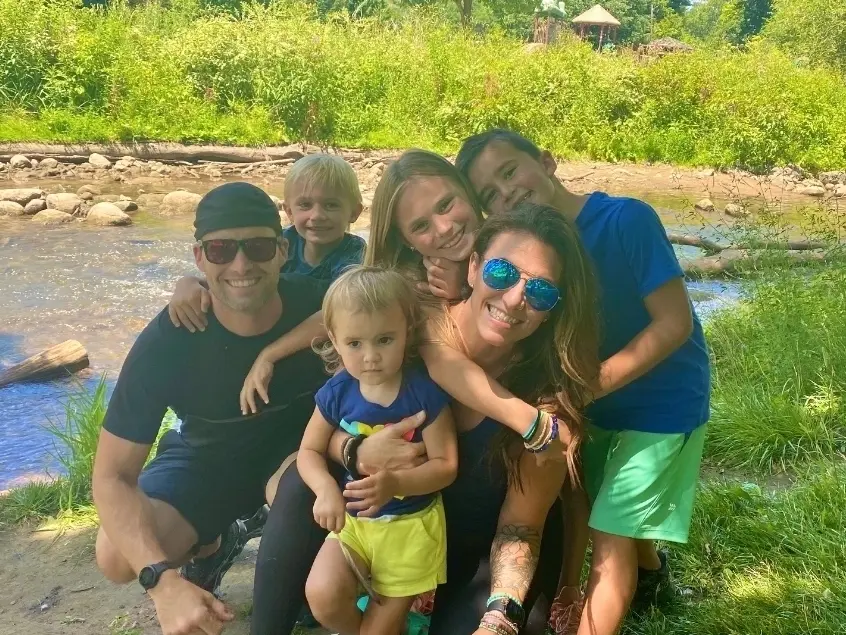Recovered ACL Injury Patient Nichole Taylor can enjoy time with her family again after receiving treatment from Jeffrey DeClaire, M.D.
With four children and a job, athlete Nichole Taylor doesn’t have time to slow down. But when she tore her anterior cruciate ligament (ACL), she had to hit the brakes long enough to contact Jeffrey DeClaire, M.D., founder of Michigan Knee Institute.
“My husband and I were in downtown Detroit for a fundraiser where you climb thousands of stairs to promote awareness for lung disease and disorders,” says Taylor. “After the event, someone suggested we hop on motorized scooters and get some food. The brakes weren’t working, so I jumped off the scooter and basically took all the impact on my right leg (after climbing about one thousand stairs). I immediately felt the pain—it was obvious that I had done some significant damage and I needed to find the best orthopedic surgeon for this condition.”
“This was Nichole’s first major injury to the knee,” said Dr. DeClaire, who performs over 1,000 knee surgeries annually. “She tore her ACL and her meniscus and came to me for treatment. I explained to Nichole that the new ligament can either come from her own tissue (autograft) or a cadaver (allograft). The advantage of the cadaver tissue is that it is significantly less trauma to the tissue because we don’t have to harvest tissue from her own body.”
“What I appreciate about Dr. DeClaire,” said Taylor, “is that he goes through every line of the MRI, and he makes sure you understand the lingo of the MRI and what damage was done. He took a lot of time explaining the surgical procedure and the recovery. Unlike many physicians, Dr. DeClaire doesn’t make you feel rushed.”
A specialist in tissue-sparing treatment, Dr. DeClaire can perform osteochondral autograft transplantation, where he uses healthy cartilage tissue (graft) from the patient and transplants it to the injured joint. When the damaged cartilage area is particularly large, Dr. DeClaire can opt for osteochondral allograft transplantation, whereby a donor’s cartilage tissue (graft) is used and transplanted to the injury site.
“Nichole opted to use cadaver tissue so that she would have only one incision and thus a reduced healing time,” said Dr. DeClaire. “I walked her through the surgery and the recovery process in detail and did my best to give her a realistic expectation of what the future was going to look like.”
“He sketched the anatomy of the knee and told me every single step of the procedure. I felt comfortable going into the surgery and recovery,” stated Taylor.
“By day three after surgery, I was bearing weight and was on crutches for a couple of weeks. I started physical therapy one week after surgery.”
Now, Nichole is back to work full-time. And she is back to her boxing class and family outings.
“I can take my kids to the playground and go on family bike rides. Many thanks to Dr. DeClaire for giving me back my life!”

